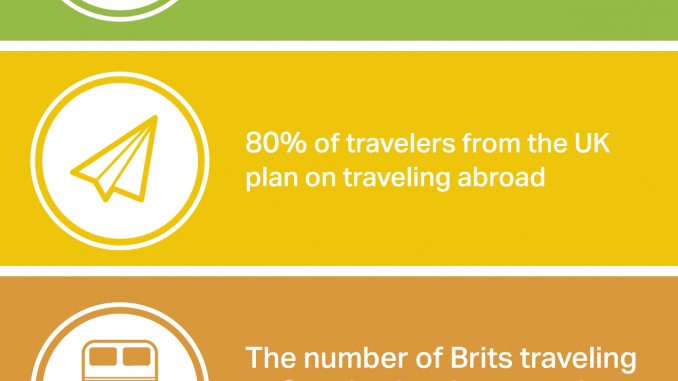
While it might seem hard to believe, the travel industry has exploded in 2016 thanks to social media.
How platforms such as Instagram, Facebook, apps and websites shaped the travel industry is a topic we are going to cover today.
But before that, some relevant stats from last year’s reports.
What 2016 Looked Like in Numbers for the Travel Industry
The tour and leisure activities industry has become a multi-billion USD market. In Europe alone, tours and entertaining activities account for over 40 billion USD, while in the US, there are over 67,000 businesses accumulating approximately 20 billion USD revenue. Travelers are more inclined to spend on sightseeing and experiencing the local life than to shop and party, which makes this segment the 3rd largest of the travel industry, after air and accommodation.
There is a rising demand for balance between early and last minute bookings and offers. Millennials are part of the segment consumers who do not like to wait, and usually book their travels one week or less prior to departure (19%). 30% of millennials also worry that costs will rise, and therefore are more inclined in booking right away. 82% of US travelers are more tempted towards domestic trips as primary vacation. 59% of travel related searches belong to people aged 35-64. Main reasons for traveling in 2016 included relaxation, adventure, time with family, friends and rewards for the hard work and results.
Last year was a “year of adventure and new experiences”, according to TripBarometer’s 2015 predictions. 69% of all-age consumers planned to experience something new, and 17% wanted to solo-travel for the first time. 1 in 5 global travelers have visited a destination because they saw it online in a TV show. With only 31% of travelers booking based on previous experiences, the majority of them embraced the idea of new, lesser-known and unique destinations.
Adventure and novelty were key marketing messages used by travel companies to attract their customers.
How Social Media Impacted the Travel Industry in 2016
According to Tnooz, 95% of respondents interviewed in a TrustYou survey stated that they read online reviews before booking a trip. TripAdvisor user stats say that 1 in 5 users will almost always check reviews before deciding on an attraction. Out of these, Australians (82%) and Generation X (74%) are more inclined to check other opinions before trying.
More than 200 new user reviews or messages are being posted on TripAdvisor every minute, and over 6.2 million businesses in over 128,000 destinations use Trip Advisor.
A new term has become quite popular: “bleisure”. Inspired by nomads and people who travel and work remotely in the same time, the new trend addresses a mix of business and leisure, embraced by technological advances.
Last year has also brought a new perspective on the “mobility” of the industry, with traveling becoming more mobile. It seems travelers just can’t escape technology and are always connected to the online world, independent of location. Increasingly more people use Instagram and Snapchat to find attractions and destinations, empowered by the personal messages and burning hashtags.
Maps, flights, Uber – in one word, information at just one click away. Consumers enjoy the perks of gig economy giant Uber in major cities around the world, especially when “bleisuring”. However, experiential travel is in high demand, as well.
For people seeking adventure, marketers are realizing they need to give travelers a taste of experience, as pictures and videos are no longer satisfying the hunger for authentic travels. A movement which has given way to adventure parks, set-up beaches and more, in order to keep consumers hooked and interested at any given time.
Two types of travelers have emerged from last year’s travel boom: the “money rich, time poor” and the “money poor, time rich”. The first, who wants to have everything planned ahead of schedule, booked, and dealt with, in order to save time, without caring much about budgets, and avid user of the hashtag #richkidsofinstagram.
The latter, defined by the average millennial who wants to gain as much of an authentic experience as possible, in a state of total “time insensitivity”, but who does not have the money to afford luxury, an avid user of #hostelfriends and AirBnB. Each in their own worlds enjoying a different type of travel experience.
Social media isn’t just Facebook. With 2.5 billion global users by 2018, and introduction of Messenger functionalities for all major social media platforms, we can only imagine how impactful platforms will become. Twitter stats dating from 2014 reveal that 44% of consumers are more inclined to learn about a new travel brand by using Twitter, 27% will share positive experiences, creating buzz for travel brands and over 39% of users access the platform during their travels.
Gen Z use of Instagram is on the rise, while for the same segment of consumers, Facebook is on a steady decline. To add more, 5 out of 6 millennials connect with companies on social media and expect perks. 97% of millennials will share pictures during their travels through Facebook, Instagram, WhatsApp and Snapchat.
Newly launched flight search TripSeats reports in their infographic that 68% of travelers are happy with social media ads and consider them to be effective in the decision-making process. Millennials again seem more open towards providing an aid to the industry, with 83% of them being open to provide their travel data to companies. More stats are available below.
With these stats in mind, it does seem like “the world is just a click away”. To where from here?
The post How Social Media Saved the Travel Industry [Infographic] appeared first on SEO Chat.
Source: SEO Chat
Link: How Social Media Saved the Travel Industry [Infographic]



Leave a Reply